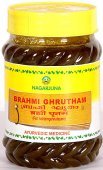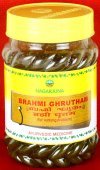Vidanga, Vidamga, Viḍaṅga: 20 definitions
Introduction:
Vidanga means something in Hinduism, Sanskrit, Jainism, Prakrit, biology. If you want to know the exact meaning, history, etymology or English translation of this term then check out the descriptions on this page. Add your comment or reference to a book if you want to contribute to this summary article.
In Hinduism
Ayurveda (science of life)
Cikitsa (natural therapy and treatment for medical conditions)
Source: Ancient Science of Life: Botanical identification of plants described in Mādhava CikitsāViḍaṅga (विडङ्ग) refers to the medicinal plant Embelia ribes Burm., and is used in the treatment of atisāra (diarrhoea), according to the 7th century Mādhavacikitsā chapter 2. Atisāra refers to a condition where there are three or more loose or liquid stools (bowel movements) per day or more stool than normal. The second chapter of the Mādhavacikitsā explains several preparations [including Viḍaṅga] through 60 Sanskrit verses about treating this problem.
Rasashastra (Alchemy and Herbo-Mineral preparations)
Source: Wisdom Library: Rasa-śāstraViḍaṅga (विडङ्ग) or Viḍaṅgalauha is the name of a Ayurvedic recipe defined in the fifth volume of the Rasajalanidhi (chapter 12, Krimi: worms and bacilli). These remedies are classified as Iatrochemistry and form part of the ancient Indian science known as Rasaśāstra (medical alchemy). However, since it is an ayurveda treatment it should be taken with caution and in accordance with rules laid down in the texts.
Accordingly, when using such recipes (e.g., viḍaṅga-lauha): “the minerals (uparasa), poisons (viṣa), and other drugs (except herbs), referred to as ingredients of medicines, are to be duly purified and incinerated, as the case may be, in accordance with the processes laid out in the texts.” (see introduction to Iatro chemical medicines)
Veterinary Medicine (The study and treatment of Animals)
Source: Asian Agri-History: Paśu Āyurvēda (Veterinary Medicine) in GaruḍapurāṇaViḍaṅga (विडङ्ग) refers to Embelia ribes, and is used in the treatment of elephants (Gajāyurveda or Hastyāyurveda), according the Garuḍapurāṇa.—The drugs, treatments enumerated in connection with diseases of horses may also be employed in the diseases of elephants. But the dosage is four times of that of a horse. In Garuḍapurāṇa a kaṣāya known as Rogasāmaka-kaṣāya mentioned for treating the diseases of elephants. It is made up of the following pacifying drugs:—[...] Viḍaṅga (Embelia ribes) [...].
Agriculture (Krishi) and Vrikshayurveda (study of Plant life)
Source: Shodhganga: Drumavichitrikarnam—Plant mutagenesis in ancient IndiaViḍaṅga (विडङ्ग) (identified with Embelia ribes) is used in a recipe for manipulating the taste of fruits (on the tree), according to the Vṛkṣāyurveda by Sūrapāla (1000 CE): an encyclopedic work dealing with the study of trees and the principles of ancient Indian agriculture.—Accordingly, “A tree which normally produces pungent fruits starts producing fruits sweet like the nectar if thickly smeared at the root with the paste of the mixture made out Embelia ribes [e.g., Viḍaṅga], Glycyrrhiza glabra, barley, milk and jaggery”.
Unclassified Ayurveda definitions
Source: Wisdom Library: Āyurveda and botanyViḍaṅga (विडङ्ग):—A Sanskrit word referring to “Embelia”, a herb from the Primulaceae family of flowering plants. It is used throughout Ayurvedic literature such as the Caraka-saṃhitā. It is also known as Vella. Its official botanical name is Embelia ribes and is commonly known in English as “White-flowered Embelia” and “False Black Pepper“. It is found throughout India and usually grows in hilly regions. The literal translation of Viḍaṅga is “clever”, “able” or “skilful”.
Source: Google Books: Essentials of AyurvedaViḍaṅga (विडङ्ग).—The Sanskrit name for an important Ayurvedic drug.—Viḍaṅga is a good anthelmintic drug and eliminates intestinal worms. Besides it alleviates abdominal pain, flatulence, constipation and loss of appetite.
Source: archive.org: Sushruta samhita, Volume IThe Vidanga fruit produces a state of dryness in the body, is heat-making in its potency, light, and pungent in digestion, subdues the Vāyu and Kapham and is slightly bitter and anti-toxic.

Āyurveda (आयुर्वेद, ayurveda) is a branch of Indian science dealing with medicine, herbalism, taxology, anatomy, surgery, alchemy and related topics. Traditional practice of Āyurveda in ancient India dates back to at least the first millenium BC. Literature is commonly written in Sanskrit using various poetic metres.
Sports, Arts and Entertainment (wordly enjoyments)
Source: archive.org: Syainika Sastra of Rudradeva with English Translation (art)Viḍaṅga (विडङ्ग) is used to combat parasites eating the Hawk’s feathers, according to the Śyainika-śāstra: a Sanskrit treatise dealing with the divisions and benefits of Hunting and Hawking, written by Rājā Rudradeva (or Candradeva) in possibly the 13th century.—Accordingly, [while discussing the treatment of hawks]: “[...] If parasites eat off the feathers, the remedy is equal quantities of Viḍaṅga, marking nut, and musk; or, in the case of fat birds two ratis of rock-salt with meat for three days, but for lean birds only half a rati of rock-salt. [...]”.

This section covers the skills and profiencies of the Kalas (“performing arts”) and Shastras (“sciences”) involving ancient Indian traditions of sports, games, arts, entertainment, love-making and other means of wordly enjoyments. Traditionally these topics were dealt with in Sanskrit treatises explaing the philosophy and the justification of enjoying the pleasures of the senses.
General definition (in Hinduism)
Source: Wisdom Library: HinduismViḍaṅga is a herb used in Ayurvedic medicine commonly known as Emblica ribes.
Biology (plants and animals)
Source: Wisdom Library: Local Names of Plants and DrugsVidanga in the Sanskrit language is the name of a plant identified with Myrsine africana L. from the Myrsinaceae (Myrsine) family. For the possible medicinal usage of vidanga, you can check this page for potential sources and references, although be aware that any some or none of the side-effects may not be mentioned here, wether they be harmful or beneficial to health.
Vidanga in the Sanskrit language is the name of a plant identified with Embelia tsjeriam-cottam (Roem. & Schult.) A.DC. from the Primulaceae (Primrose) family having the following synonyms: Embelia basaal, Embelia robusta.
Vidanga [विडंग] in the Hindi language is the name of a plant identified with Embelia ribes Burm.f. from the Primulaceae (Primrose) family having the following synonyms: Embelia paniculata, Antidesma ribes.
Source: Google Books: CRC World Dictionary (Regional names)1) Vidanga in India is the name of a plant defined with Embelia ribes in various botanical sources. This page contains potential references in Ayurveda, modern medicine, and other folk traditions or local practices It has the synonym Ribesiodes ribes (Burm. f.) Kuntze (among others).
2) Vidanga is also identified with Embelia tsjeriam-cottam It has the synonym Embelia robusta Roxb. (etc.).
Example references for further research on medicinal uses or toxicity (see latin names for full list):
· Nomenclator Botanicus (1797)
· Hortus Bengalensis, or ‘a Catalogue of the Plants Growing in the Hounourable East India Company's Botanical Garden at Calcutta’ (1814)
· Revisio Generum Plantarum (1891)
· FBI (1882)
· Journal of the Asiatic Society of Bengal.
· Transactions of the Linnean Society of London (1834)
If you are looking for specific details regarding Vidanga, for example chemical composition, side effects, extract dosage, pregnancy safety, health benefits, diet and recipes, have a look at these references.

This sections includes definitions from the five kingdoms of living things: Animals, Plants, Fungi, Protists and Monera. It will include both the official binomial nomenclature (scientific names usually in Latin) as well as regional spellings and variants.
Languages of India and abroad
Sanskrit dictionary
Source: DDSA: The practical Sanskrit-English dictionaryViḍaṅga (विडङ्ग).—a. Clever, skilful.
-ṅgaḥ, -ṅgam Name of a vegetable and medicinal substance (largely used as a vermifuge).
Source: Cologne Digital Sanskrit Dictionaries: Shabda-Sagara Sanskrit-English DictionaryViḍaṅga (विडङ्ग).—mfn.
(-ṅgaḥ-ṅgā-ṅgaṃ) Clever, able, skilful, conversant. mn.
(-ṅgaḥ-ṅgaṃ) A vegetable and medicinal substance, considered of great efficacy as a vermifuge. E. viḍ to break, to curse, Unadi aff. aṅgac .
Source: Cologne Digital Sanskrit Dictionaries: Benfey Sanskrit-English DictionaryViḍaṅga (विडङ्ग).—adj. Clever.
Source: Cologne Digital Sanskrit Dictionaries: Monier-Williams Sanskrit-English Dictionary1) Viḍaṅga (विडङ्ग):—[from viḍ] mfn. clever, able, skilful, [cf. Lexicographers, esp. such as amarasiṃha, halāyudha, hemacandra, etc.]
2) [v.s. ...] m. and f(ā). Embelia Ribes, [cf. Lexicographers, esp. such as amarasiṃha, halāyudha, hemacandra, etc.]
3) [v.s. ...] n. the fruit of the above plant (a vermifuge), [cf. Lexicographers, esp. such as amarasiṃha, halāyudha, hemacandra, etc.]
Source: Cologne Digital Sanskrit Dictionaries: Yates Sanskrit-English DictionaryViḍaṅga (विडङ्ग):—[(ṅgaḥ-ṅgā-ṅgaṃ) a.] Clever. m. n. A vegetable substance used as a vermifuge.
Source: DDSA: Paia-sadda-mahannavo; a comprehensive Prakrit Hindi dictionary (S)Viḍaṅga (विडङ्ग) in the Sanskrit language is related to the Prakrit word: Viḍaṃga.
[Sanskrit to German]
Sanskrit, also spelled संस्कृतम् (saṃskṛtam), is an ancient language of India commonly seen as the grandmother of the Indo-European language family (even English!). Closely allied with Prakrit and Pali, Sanskrit is more exhaustive in both grammar and terms and has the most extensive collection of literature in the world, greatly surpassing its sister-languages Greek and Latin.
Prakrit-English dictionary
Source: DDSA: Paia-sadda-mahannavo; a comprehensive Prakrit Hindi dictionaryViḍaṃga (विडंग) in the Prakrit language is related to the Sanskrit word: Viḍaṅga.
Prakrit is an ancient language closely associated with both Pali and Sanskrit. Jain literature is often composed in this language or sub-dialects, such as the Agamas and their commentaries which are written in Ardhamagadhi and Maharashtri Prakrit. The earliest extant texts can be dated to as early as the 4th century BCE although core portions might be older.
Kannada-English dictionary
Source: Alar: Kannada-English corpusViḍaṃga (ವಿಡಂಗ):—
1) [noun] the plant Embelia ribes of Myrsinaceae family; worm killer.
2) [noun] a clever, intelligent man.
3) [noun] (sarc.) a dull, slow-witted man.
Kannada is a Dravidian language (as opposed to the Indo-European language family) mainly spoken in the southwestern region of India.
See also (Relevant definitions)
Starts with: Vidangah, Vidangakalka, Vidangalauha, Vidangam, Vidangamu, Vitankam, Vitankan, Vitankar.
Query error!
Full-text (+51): Vitankam, Vayavidamga, Vayividamga, Jantughna, Krimikantaka, Tandulu, Vidangah, Krimighna, Vidangam, Vaayu vidangam, Krimiripu, Citratandula, Krimishatru, Vai-vidanga, Vai-vidanga lal, Vai-vidanga kala, Vatari, Sapta-vitankastalam, Amogha, Catta-vitankatalam.
Relevant text
Search found 31 books and stories containing Vidanga, Vidamga, Viḍaṃga, Viḍaṅga, Viḍanga; (plurals include: Vidangas, Vidamgas, Viḍaṃgas, Viḍaṅgas, Viḍangas). You can also click to the full overview containing English textual excerpts. Below are direct links for the most relevant articles:
Atharvaveda and Charaka Samhita (by Laxmi Maji)
5b. Kṛmi (Worms) in the Atharvaveda < [Chapter 5 - Diseases and Remedies in Atharvaveda and Caraka-Saṃhitā]
4b. Leprosy (Kuṣṭha) in the Caraka-saṃhitā < [Chapter 5 - Diseases and Remedies in Atharvaveda and Caraka-Saṃhitā]
Classification of Drugs in the Caraka-Saṃhitā < [Chapter 4 - Diseases and Remedial measures (described in Caraka-saṃhitā)]
Ancient indian bacteriology < [Volume 10 (issue 3), Jan-Mar 1991]
Microscopic identification of curna, kvatha, lehya, and rasayana ingredients. < [Volume 1 (issue 1), Jul-Sep 1981]
Helminthiasis in children and its treatment with indigenous drugs < [Volume 4 (issue 4), Apr-Jun 1985]
World Journal of Pharmaceutical Research
An overview on vidang (e. ribes) < [2021: Volume 10, July issue 8]
Critical analysis of haritakyadi churna as a formulation for shrotoshodhana < [2019: Volume 8, August issue 9]
Prameha – a penalty for faulty pattern of life < [2023: Volume 12, February issue 3]
International Ayurvedic Medical Journal
Study on agrya aushadhi (foremost substances) w.s.r to clinical practice in ayurveda < [2021, Issue 6, June]
Dhupana karma in ayurveda texts: a review < [2019, Issue 5, May]
A conceptual review work on the treatment of kaphaj prameha in ayurveda < [2022, Issue 3, March]
Agni Purana (by N. Gangadharan)
Chapter 287 - The treatment of the diseases of elephants (gaja-cikitsā)
Chapter 282 - Description of Horticulture (vṛkṣāyurveda)
Chapter 285 - The accomplished recipes that would revive the dead (mṛtasañjīvanī)
Pratyabhijna and Shankara’s Advaita (comparative study) (by Ranjni M.)
Related products
(+79 more products available)





